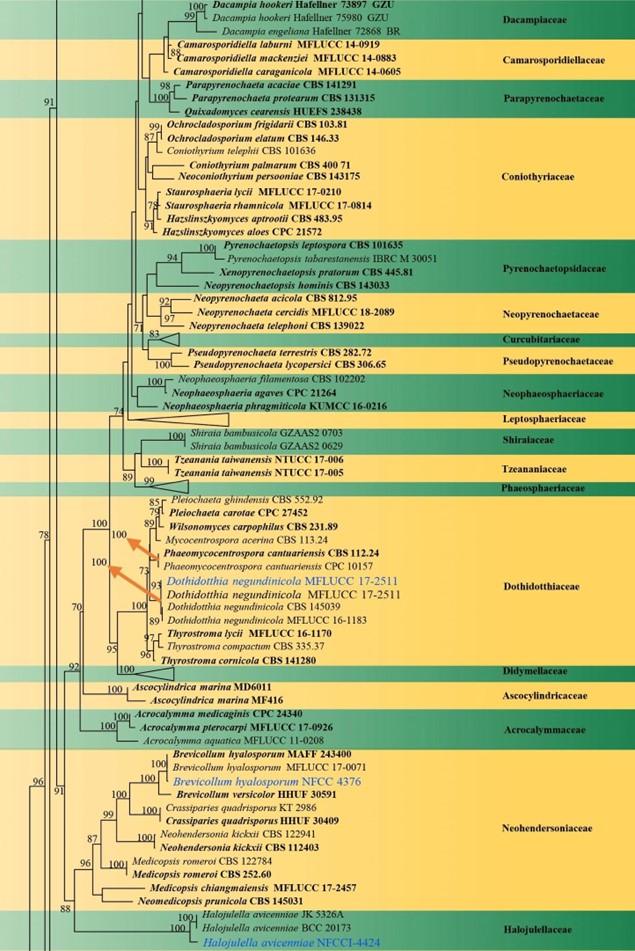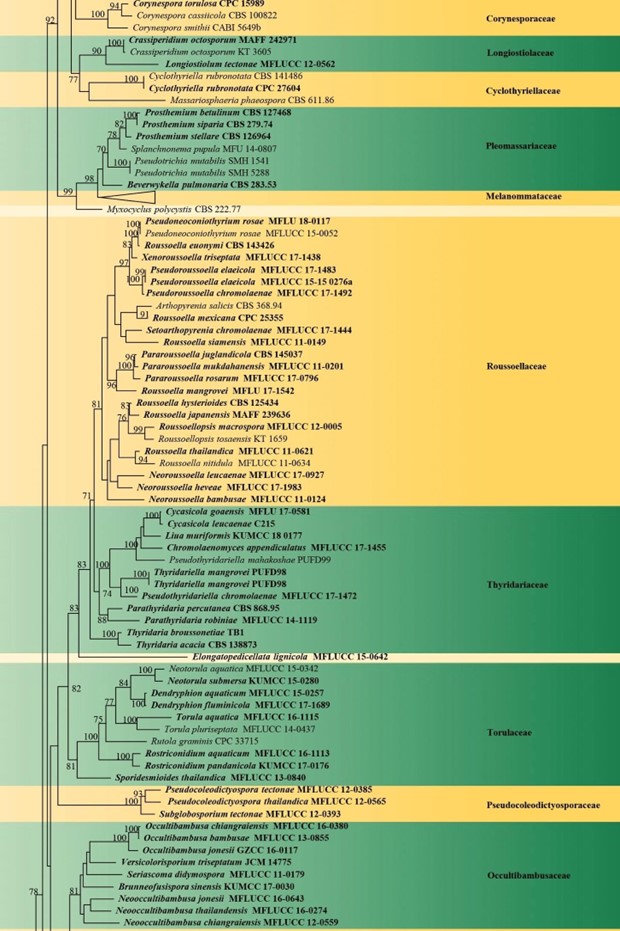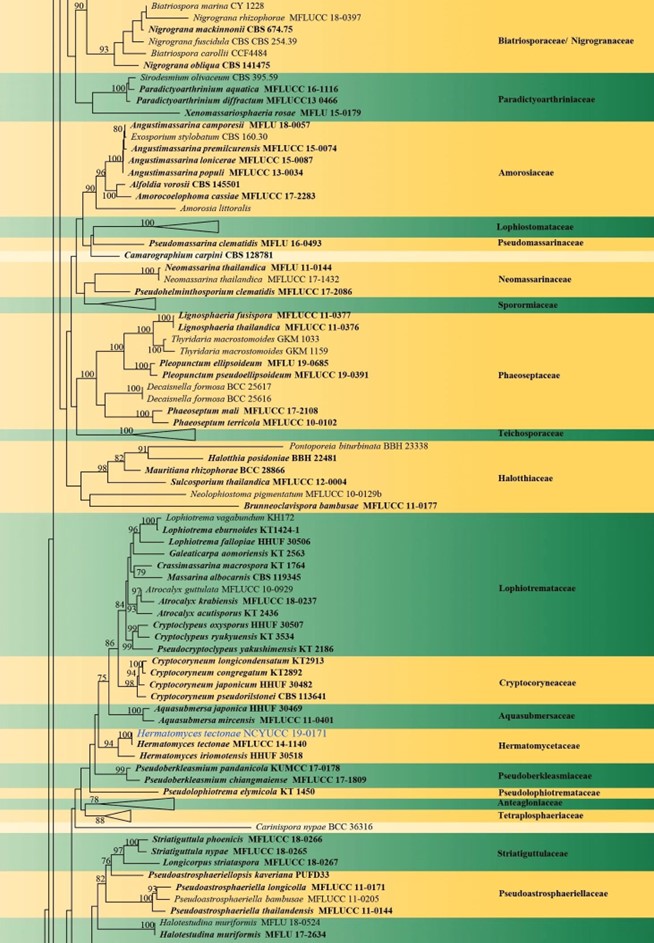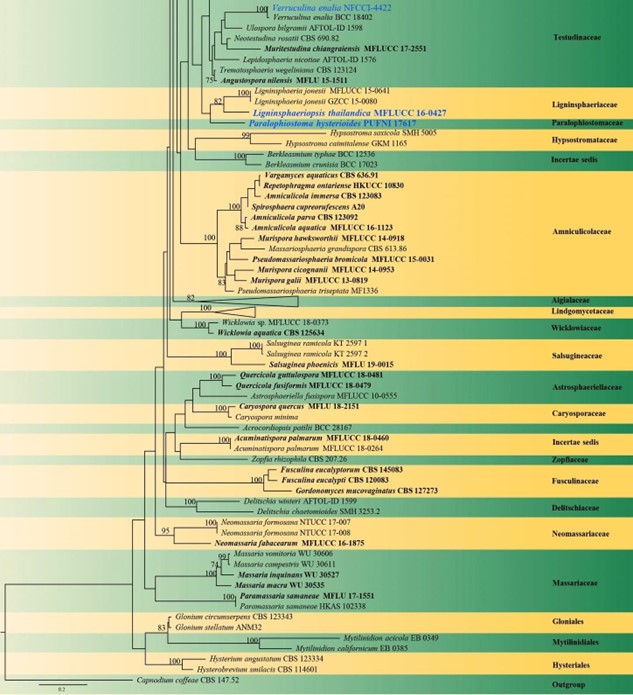Wicklowiaceae Ariyaw. & K.D. Hyde, Fungal Divers. 75: 126 (2015).
MycoBank number: MB 551445; Index Fungorum number: IF 551445; Facesoffungi number: FoF 00966, 1 species.
Saprobic on submerged decorticated woody debris in aquatic habitats. Sexual morph: Ascomata immersed, becoming erumpent, solitary to gregarious, appearing as a black, oval to circular, shallow, subglobose, ostiolate. Peridium comprising several layers of small pseudoparenchymatous cells, arranged in a textura angularis, fusing at the outside with the host cells. Hamathecium comprising, densely, septate, cellular pseudoparaphyses, embedded in a gelatinous matrix. Asci 8-spored, bitunicate, fissitunicate, broadly clavate, pedicellate, rounded at the apex, with a wide, shallow, ocular chamber. Ascospores overlapping 2–3-seriate, ellipsoidal, hyaline, 1-septate, slightly constricted at the septum, with or without appendages. Asexual morph: Undetermined.
Type – Wicklowia Raja, A. Ferrer & Shearer.
Notes – Wicklowiaceae was proposed by Ariyawansa et al. (2015a) to place monotypic freshwater ascomycetous genus Wicklowia in order Pleosporales based on both morphology and phylogeny. Wicklowiaceae shows close phylogenetic relationship to Lindgomycetaceae (Fig. 42), but can be separated from all known freshwater ascomycetous genera by its subglobose, immersed to erumpent, black ascomata, with cellular pseudoparaphyses in a gelatinous matrix and broadly clavate asci, bearing cylindrical, hyaline, uni-septate ascospores surrounded by a gelatinous sheath.

Figure 42 – Phylogram generated from maximum likelihood analysis (RAxML) of Pleosporales based on ITS, LSU, rpb-2, SSU and tef1 sequence data. Maximum likelihood bootstrap values equal or above 70 % are given at the nodes. An original isolate number is noted after the species name. The tree is rooted to Capnodium coffeae (CBS 147.52). The ex-type strains are indicated in bold.

Figure 42 – Continued.

Figure 42 – Continued.

Figure 42 – Continued.

Figure 42 – Continued.

Figure 42 – Continued.
Genera
